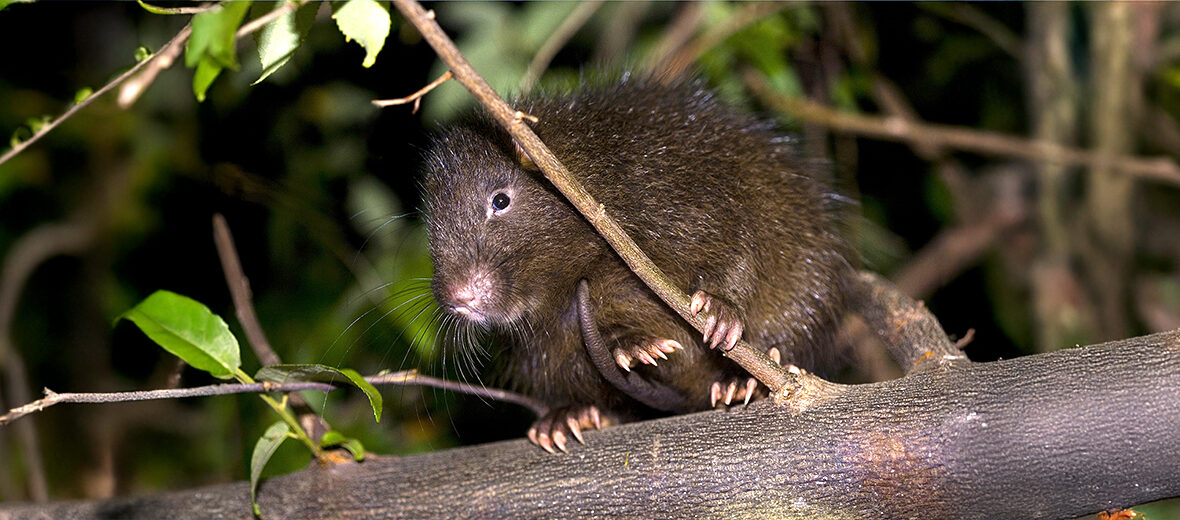
The Hispaniolan hutia is a diminutive rat-like mammal endemic to the forest habitats on the Caribbean island of Hispaniola. Hispaniola is situated between Haiti and the Dominican Republic. These rodents face the threats of habitat loss and destruction at the hands of farming, ranching, & deforestation due to the logging industry; and invasive species, in the form of dogs and cats that prey on them. These rodents are still abundant enough to be listed as Least Concern by the IUCN. Their populations are decreasing though.
First the Stats…
Scientific name: Plagiodontia aedium
Weight: Up to 2.79 lbs.
Length: Up to 12.3 inches, plus up to a 6 inch tail
Lifespan: Up to 9.11 years
Now on to the Facts!
1.) These hutias are the only living species of the genus Plagiodontia; the other 2 species, also native to Hispaniola, are now extinct.
2.) The genus name Plagiodontia translates to “oblique tooth” in Greek, and refers, naturally, to their teeth. The common name “hutia” hails from Spanish jutía, from the animal’s name in Taíno, an Indigenous language from the Caribbean.
3.) These rodents are nocturnal (active at night).
4.) They are also arboreal (spend most or all of their lives in trees and shrubs). However, some populations are, at least in part, terrestrial (spend their lives on the ground).
5.) Their communication is via soft, almost bird-like vocal chirps.
But wait, there’s more on the Hispaniolan hutia!
6.) Various roots and fruits make up their diet.
7.) Females undergo up to a 119 day gestation that yields a single juvenile hutia. On rare occasions, 2 juveniles are born.
Did you know…?
Domestic and feral dogs account for up to 75% of the deaths of these critters.
8.) Juveniles are born precocial (self sufficient).
9.) They inhabit both moist and dry forest habitats on the island. It has also been reported that they occupy rough hillsides and ravines from sea level to 6,562 feet in elevation.
10.) Their presence in several protected areas has recently been confirmed by a Darwin Initiative–funded project known as The Last Survivors; these include Del Este, Jaragua, Los Haitises, and Sierra de Bahoruco National Parks.
Now a Short Hispaniolan Hutia Video!
Be sure to share & comment below! Also, check out the Critter Science YouTube channel. Videos added regularly!

Want to suggest a critter for me to write about? Let me know here.
Some source material acquired from: Wikipedia & IUCN
Photo credit: iNaturalist



